#poet.
Text
Letitia Wright & Amanda Gorman attend the MFW 23 Prada fashion show SS24




#Letitia wright#Amanda Gorman#black Hollywood#black panther#marvel#prada#MFW 23#Milan fashion week#poet.
23 notes
·
View notes
Photo

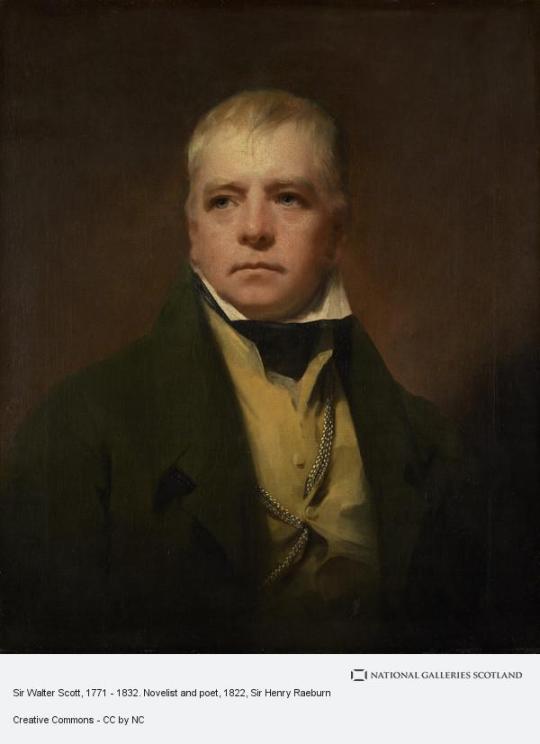
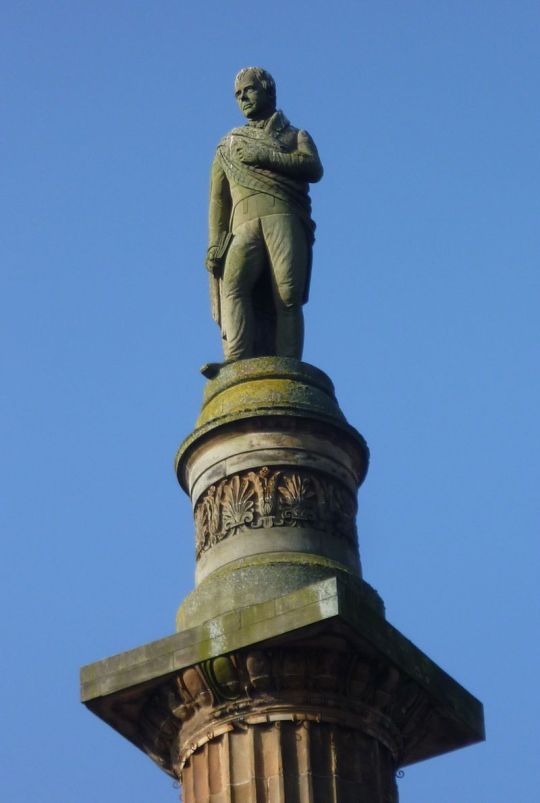
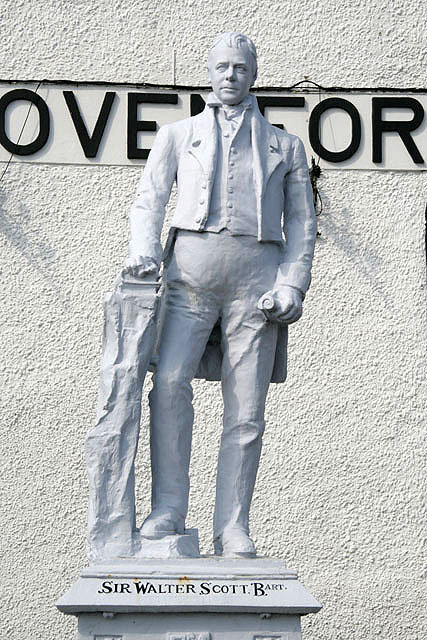


On September 21st 1832 the novelist and poet Sir Walter Scott died aged 61.
Born in a small third floor flat in College Wynd in Edinburgh’s Old Town, Walter was the ninth child of Anne Rutherford and Walter Scott, a solicitor and member of the private Scottish society known as the Writers of the Signet, so called for their entitlement to use the Scottish King’s seal – known as the signet – when drawing up legal documents.
Whilst the Scott’s home near the University was a popular area for lecturers and professionals like Scott’s father to live, in reality the small, overcrowded alleyway saw little natural light and clean air and suffered from a lack of proper sanitation. Unsurprisingly perhaps then, that six of Anne and Walter’s children died in infancy and the young Walter (or ‘Wattie’ as he was affectionately known) when he was just two years old, Scott became afflicted with polio. Though he survived the illness, his right leg would be unusable for the rest of his life.
Writing was not Scott’s first career choice. He studied law, which he practiced after completing his studies. He later served as sheriff-deputy of his county, for our those not familiar with the term sheriff in Scotland one doesn’t have a star and six shooters but was a judge in the Scotland’s courts, a term still used to this day.
In the 19th century, Scott's stories and poems put Scotland on the map as a tourist destination. And while his writings spanned the whole country, his heart was always in his adopted home of the Scottish Borders. In fact, the Borders feature in three of his novels, The Monastery, The Black Dwarf and Saint's Ronan's Well.
I wont go into his literary output this time, instead I will give you a few facts about one of our greatest storytellers...
Scott contracted polio as a child and temporarily lost the use of his right leg. When he was sent to his grandfather's farm in Sandyknowe to recuperate, his passionate love affair with the Scottish Borders began.
A second bout of bad health a few years later saw him convalescing in Kelso, where he learned even more about the old songs and folklore of the region. If it hadn't been for those fateful illnesses, Scott wouldn't have been inspired to celebrate the Borders in his work and it wouldn't have become such a popular visitor spot. His periods of ill-health meant he always walked with a stick, as seen in many paintings of him.
In 1786, when Scott was just 15, he bumped into Scotland's celebrated poet at a party thrown by philosopher Adam Ferguson . The two didn't speak much, but Scott later remembered being struck by the poet's dignity and the emotion that glowed in his eyes. Burns in turn appears to have been impressed by the young Scott's knowledge of poetry. The “scene” painting is an imagination of the event painted years later.
Sir Walter who conjured up the fashion magazine term “glamour”. It had a bit of a different meaning than it does now though — he actually took it from the old Scottish word 'gramarye', which means a spell that enchants the eye. It appears in his 1805 poem, 'The Lay of the Last Minstrel'.
Dark was the vaulted room of gramarye,
A moment then the volume spread,
And one short spell therein he read:
It had much of glamour might;
Could make a ladye seem a knight;
The cobwebs on a dungeon wall
Scott expanded upon the nature of glamour further in his Letters on Demonology and Witchcraft of 1830, when in letter three he wrote that “This species of Witchcraft is well known in Scotland as the glamour, or deceptio visus, and was supposed to be a special attribute of the race of Gipsies.”
It is widely regarded that Sir Walter Scott invented the historical novel
Scott was the first English language author to enjoy worldwide fame while he was still alive. And with Waverley in 1814, he actually invented the entire genre of the historical novel.
Five years later, his novel Ivanhoe helped to create our contemporary concept of Robin Hood, making the outlaw a nobleman called Robin of Locksley. This idea later inspired the 1991 movie, Robin Hood: Prince of Thieves, proving that Scott's imagination is timeless. Eventually, he used the financial rewards from his writings to build his house, Abbotsford, on the banks of the Tweed.
Sir Walter Scott served as chairman of the Royal Society of Edinburgh and was also a member of the Royal Celtic Society. His own contribution to the reinvention of Scottish culture was enormous, even though his re-creations of the customs of the Highlands were fanciful at times.
Scott has been credited with rescuing the Scottish banknote. In 1826, there was outrage in Scotland at the attempt of Parliament to prevent the production of banknotes of less than five pounds. Scott wrote a series of letters to the Edinburgh Weekly Journal under the pseudonym "Malachi Malagrowther" for retaining the right of Scottish banks to issue their own banknotes. This provoked such a response that the Government was forced to relent and allow the Scottish banks to continue printing pound notes. This campaign is commemorated by his continued appearance on the front of all notes issued by the Bank of Scotland.
Scott spent his last days at his house in Abbotsford, Roxburgh. He requested to be moved to the dining room in order to have a clear view of his beloved River Tweed from the window.
He died on this day 1832 and was buried in the already derelict Dryburgh Abbey - a spot he identified at an early age as his resting place.
29 notes
·
View notes
Text
What it Takes for S.W.L
*
I feel the hand of the night sky
holding my shoulder tight
to guide me through
there is just so much pain
never been the one
to rise up from the ashes
with elegance and pride
to start anew
Oh, I listen
for the sound of your voice
in the rivers
in the forest
in the stars
I don’t know where you are
or how to find you now
but, I will never stop trying
tracing all of the years
our last three words
exchanged
I love you
*
and I’m dying
to see you again
*
©Ari Newman/2022
#Ari Newman#artist#writer#poetry#poem#poet.#arinewman7#poets on tumblr#poetry on tumblr#What it Takes for S.W.L#arinewman 2022#I miss you#©Ari Newman/2022
11 notes
·
View notes
Text
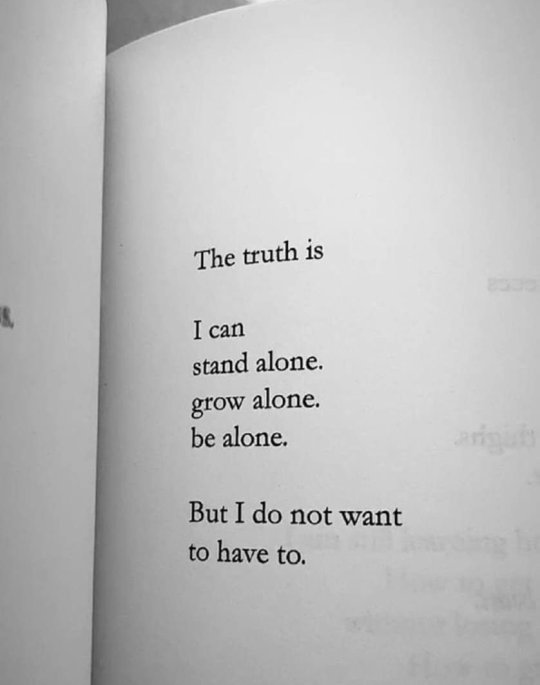
#poets corner#poets on tumblr#quoteoftheday#quotes#poetry#life#feelings#quote of the day#life quotes#poetry quotes#wisdom#words#writers on tumblr#writing#thoughts#spilled thoughts#spilled ink#heartfelt#emotions#poetic#dreams#love quotes#creative writing#philosophy#musings#introspection#introspective#soulful#prose#daily inspiration
26K notes
·
View notes
Text

#writing#writing memes#writers#writers on tumblr#writing humor#meme#memes#writers life#writers and poets#author#authors of tumblr#writerscommunity#writblr#ao3#ao3 writer#writers of ao3
19K notes
·
View notes
Text

What i made instead of writing.....
#writerscommunity#Writer#Writing#writer problems#writers on tumblr#writers and poets#writeblr#writing
17K notes
·
View notes
Text
Hey! Are there blacksmiths in your story? I'm a hobbyist blacksmith and I'm here to help!
Blacksmithing is one of those things that a lot of people get wrong because they don't realize it stuck around past the advent of the assembly line. Here's a list of some common misconceptions I see and what to do instead!
Not all blacksmiths are gigantic terrifying muscly guys with beards and deep voices. I am 5'8, skinny as a twig, have the muscle mass of wet bread, and exist on Tumblr. Anybody who is strong enough to pick up a hammer and understands fire safety can be a blacksmith.
You can make more than just swords with blacksmithing. Though swords are undeniably practical, they're not the only things that can be made. I've made candle holders, wall hooks, kebab skewers, fire pokers, and more. Look up things other people have made, it's really amazing what can be done.
"Red-hot" is actually not that hot by blacksmith terms. when heated up, the metal goes from black, to red, to orange, to yellow, to white. (for temperature reference, I got a second degree burn from picking up a piece of metal on black heat) The ideal color to work with the metal is yellow. White is not ideal at all, because the metal starts sparking and gets all weird and lumpy when it cools. (At no point in this process does the metal get even close to melting. It gets soft enough to work with, but I have never once seen metal become a liquid.)
Blacksmithing takes fucking forever. Not even taking into account starting the forge, selecting and preparing metal, etc. etc. it takes me around an hour to make one (1) fancy skewer. The metals blacksmiths work with heat up and cool down incredibly fast. When the forge is going good, it only takes like 20 seconds to get your metal hot enough to work with, but it takes about the same time for it to cool down, sometimes even less.
As long as you are careful, it is actually stupidly easy to not get hurt while blacksmithing. When I picked up this hobby I was like "okay, cool! I'm gonna make stuff, and I'm gonna end up in the hospital at some point!" Thus far, the latter has yet to occur. I've been doing this for nearly a year. I have earned myself a new scar from the aforementioned second degree burn, and one singe mark on my jeans. I don't even wear gloves half the time. Literally just eye protection, common sense, and fast reflexes and you'll probably be fine. (Accidents still happen of course, but I have found adequate safety weirdly easy to achieve with this hobby)
A forge is not a fire. The forge is the thing blacksmiths put their metal in to heat it up. It starts as a small fire, usually with newspaper or something else that's relatively small and burns easily, which we then put in the forge itself, which is sort of a fireplace-esque thing (there's a lot of different types of forge, look into it and try to figure out what sort of forge would make the most sense for the context you're writing about) and we cover it with coal, which then catches fire and heats up. The forge gets really hot, and sometimes really bright. Sometimes when I stare at the forge for too long it's like staring into the sun. The forge is also not a waterfall of lava, Steven Universe. It doesn't work like that, Steven Universe.
Welding and blacksmithing are not the same thing. They often go hand-in-hand, but you cannot connected two pieces of metal with traditional blacksmithing alone. There is something called forge welding, where you heat your metal, sprinkle borax (or the in-universe equivalent) on it to prevent the metal from oxidizing/being non-weldable, and hammer the pieces together very quickly. Forge welding also sends sparks flying everywhere, and if you're working in a small space with other blacksmiths, you usually want to announce that you're welding before you do, so that everyone in a five-foot radius can get out of that five-foot radius. You also cannot just stuck some random pebbles into the forge and get a decent piece of metal that you can actually make something with, Steven Universe. It doesn't work like that, Steven Universe.
Anvils are really fucking heavy. Nothing else to add here.
Making jewelry is not a blacksmithing thing unless you want jewelry made of steel. And it will be very ugly if you try. Blacksmithing wasn't invented to make small things.
If there's anything here I didn't mention, just ask and I'll do my best to answer.
#yes some of this was directed at steven universe#the only thing su got right was bismuth crying when her anvil broke#cus those things are goddamn expensive and hard to transport#blacksmith#blacksmithing#writing#writing prompts#writing advice#writeblr#writer#writer problems#writerblr#writerscommunity#writers on tumblr#writers and poets#writers
36K notes
·
View notes
Text
i hope my absence gives you the peace my love apparently never could
- nick <3
#heartbreak#love#love quotes#poetry#soulmates#love poetry#poems on tumblr#spilled poetry#spilled thoughts#breakup#spilled writing#spilled words#spilled ink#writers and poets#writers on tumblr#writing#poems and quotes#poems and poetry#poets on tumblr#love poem
19K notes
·
View notes
Text
“I’m having his baby! No I’m not, but you should see your faces!”

15K notes
·
View notes
Text
People aren't homes, they never will be. People are rivers, always changing, forever flowing. They will disappear with everything you put inside them.
~ Nikita Gill
#life quotes#poetry#book quotes#quotes#thoughts#writers and poets#aesthetic#dark academia#english literature#booklr#writers on tumblr#spilled words#spilled poetry#spilled thoughts#spilled ink#words#literature#life#books#bookblr#poets on tumblr#poetic
13K notes
·
View notes
Text
"you cant heal if you pretend you're not hurt"
-filmythings
#english literature#inspiring quotes#poems on tumblr#poetry#life quotes#love#relationship quotes#love quotes#dark academia#quoteoftheday#hurt/comfort#dark acadamia aesthetic#dark acedemia#dark aesthetic#spilled writing#writers and poets#writers on tumblr#writeblr#writing#writerscommunity
14K notes
·
View notes
Photo
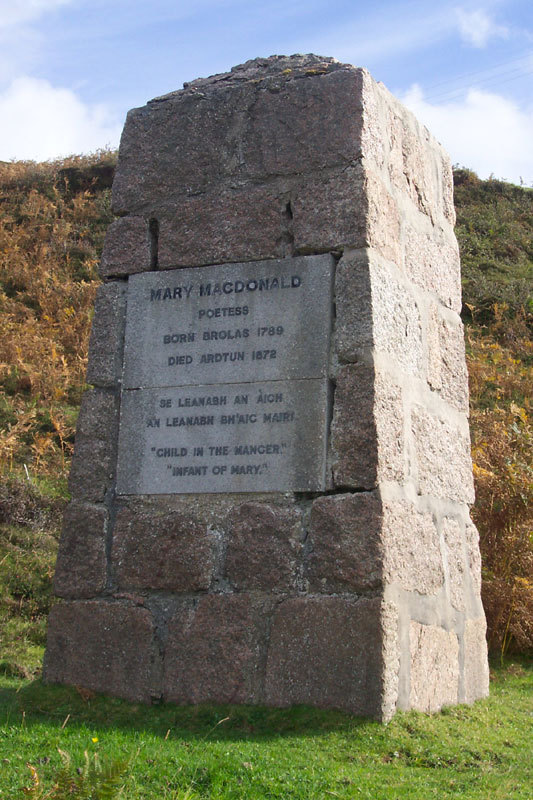
21st May 1872 saw the death in Bunessan on Mull of the Gaelic poet Mary MacDonald.
In some ways Mary’s life was unremarkable: in outline it was the same as hundreds, perhaps thousands, of other women who lived in the highlands and islands of Scotland. She was a farmer’s daughter, born in 1789 in Ardtun, a crofting settlement to the east and north of Bunessan. She married Neil MacDonald and lived her whole life here as a crofter’s wife, till her death in 1872.
Like all of her community Mary was a Gaelic speaker; but more significantly, she was a Gaelic singer. As she sat at her spinning-wheel in her wee croft she would sing. Sometimes she would make up her own songs, setting them to the old folk melodies of the islands: her monument, as seen in the pic, outside Bunessan describes her as a poetess. She was a devout Baptist, and her songs were often hymns. Some of these became well-known in the area, perhaps being sung in the little church in Bunessan.
In 1888 a journalist and Gaelic scholar named Lachlan Macbean brought out a collection of Gaelic lyrics named Songs and Hymns of the Scottish Highlands. One of the hymns he included in the book has words by Mary MacDonald. It is i quoted on her memorial cairn near Bunessan, though Macbean’s version has slightly different words.
The original verse included the words in Gaelic;
“Leanabh an àigh!
Leanabh bh’aig Màiri;
Rugadh an stàbull,
Righ nan dùl!
Thainig do’n fhàsach,
Dh’fhuiling ’nar n-àite
Son’iad an aireamh
Bhitheas dha dluth”
MacBean translated this into English as follows:
“Child in the manger!
Infant of Mary;
Outcast and stranger,
Lord of all!
Child who inherits
All our transgressions,
All our demerits
On Him fall!”
Many people will know the tune that Bunessan has, it was used as the tune of Cat Stevens 1972 hit ‘Morning has broken’.
36 notes
·
View notes
Text
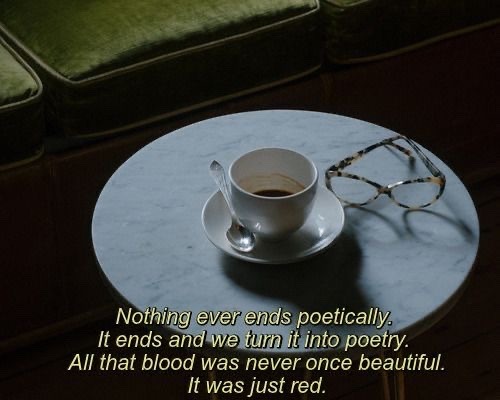
#dark academia#dark acadamia aesthetic#dark acadamia quotes#dark romanticism#romantic academia#light academia#the secret history#academia aesthetic#academia#classic academia#dead poets society#fall aesthetic#chaotic academia#movie quotes
26K notes
·
View notes
Text
If hurting me does not hurt you, you don’t love me. You’re using me.
k.b // by jerry flowers jr
#jerry flowers jr#tik tok#tik tok quotes#k.b.#quotes#poets on tumblr#writers on tumblr#love#love quotes#quote#words#love quote#cute#deep thoughts#life#life quotes#life lesson#life lesson quotes#writers#poetry#poem#writing#lit#literature#deep quotes
18K notes
·
View notes
Text

Andrea Gibson
#andrea gibson#dark academia#quotes#spilled words#spilled thoughts#dark aesthetic#text#book quotes#words#words words words#dark acadamia aesthetic#poet#poetry#dark academia aesthetic#academia aesthetic#chaotic academia#classic academia#light academia aesthetic#soft academia#romantic academia#study motivation#studyspo#studyinspo#studying#study aesthetic#study notes#study space#studygram#study blog#light academia
59K notes
·
View notes
Text

11K notes
·
View notes